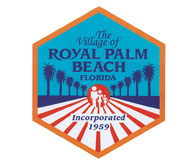The Royal Palm Beach Village Council last week directed Village Manager Ray Liggins to use money from reserves to avoid tax increases or service reductions when drawing up a budget.
At the May 3 meeting, Liggins asked for authorization to use a portion of the $5.4 million currently in “unassigned funds” to avoid a tax increase.
He explained that the village has an investment portfolio that started at about $63.4 million when the village sold its water utility to Palm Beach County in 2006. As of last September, the fund had earned about $15.9 million, but interest rates have fallen sharply. Use of the fund in the past six years subtracted about $10.4 million, and the current balance stands at $68.8 million.
Liggins said that the village had used part of the money to pay the Commons Park debt and other expenses, and estimated that $18.5 million of the fund would be used through 2017 based on past spending, which would require it to earn 4.4 percent during that time in order to avoid tapping into principal.
“A 4.4 percent return is not anticipated in the next few years,” Liggins said. “To be a perpetual fund, a 3 percent return is required after inflation. If we receive only a 2 percent return over the next few years, we will be at the inception value by the end of 2014.”
If the return stays at 2 percent for the next five years, the fund would be down to about $58.9 million at the end of 2017.
Liggins said that tapping into some of the money might be necessary in light of recurring revenues being down 21.6 percent, or $4.5 million annually, from the high in 2006.
“Our assessed values in Royal Palm Beach went from $2.8 billion to $1.8 billion today, a 36 percent decline,” he said. “When property values rose, we reduced rates, [and] when property values declined we reduced rates, until last year, when we held the rate flat.”
These reductions, along with losses in other revenues, have eliminated surplus revenue to finance future capital expenses and reduced carryover that had been used in the past to avoid tax increases or cuts in services, Liggins explained.
However, the loss of revenue did lead the village to eliminate positions and reorganize its departments, and the village has become more efficient, he said.
“I will tell you that our mission statement of providing a safe, aesthetically pleasing, family-oriented community with a full range of municipal services at the best value — I would say that we are doing that,” Liggins said.
He noted that village property values are anticipated to drop about 1 percent this year, followed by modest increases the next few years of about 2 percent. Other revenue sources are expected to improve as well. “We believe we are coming out of the decline,” Liggins said, adding that state and county experts agree.
Recurring revenue for 2012 is estimated to be about $16.3 million and increasing without new development at about $186,000 a year, or about 1.14 percent per year, until 2017, he said. Expenditures for 2012 are estimated to be about $21.3 million, increasing about $400,000 per year, or 1.91 percent, until 2017.
“The difference in recurring revenue and expenditures is made up in the investment fund carryover,” he said. “Two years ago, we budgeted a half-million dollars from the investment account to balance the budget without a tax increase, with the actual need being less than zero. Last year we budgeted one-and-a-half million from the investment account, the actual need being less than $600,000.”
Next year, Liggins said he anticipates needing $2.2 million to balance the budget, and increasing $250,000 a year. If 10 percent of undeveloped properties in the village develop each year, the unassigned reserves balance would be $1.1 million by the end of 2017, and the deficit between revenue and expenditures would be reduced to $1.2 million.
Options to borrowing from the unassigned revenue fund or raising the tax rate include possible new construction in the village, which had not been factored into the presentation but would ease the revenue shortfall if that were to happen, he said.
Liggins explained that village staff had assessed all vacant property in the village and, although residential properties are 95 percent built out, there are still significant commercial properties to be developed.
“They are about 60 to 65 percent built out, so another 35 to 40 percent remain,” he said. “If all those properties were developed, it would result in recurring revenue of $3 million to the village and about $350,000 a year in fees during the development of those properties.”
They also looked at all the property the village owns, including parks and vacant land, and identified six parcels they could get onto the tax rolls.
“Selling them at the right time might make sense,” Liggins said. “I don’t think right now is the right time. If we do that, we could realize sales of $30 million in property with recurring value of a half-million dollars a year and $800,000 in fees.”
Further cost-cutting is also an option, he said, explaining that further developments in information technology could allow for greater productivity. Further streamlining of service delivery, more outsourcing where feasible and evaluating the cost and use of all facilities are also options, he said. “We will always look for ways to cut costs,” he said.
Liggins stressed that Royal Palm Beach is not in a panic state and that many municipal officials wish they were in the financial condition that Royal Palm Beach is in.
Vice Mayor Fred Pinto and Councilman Jeff Hmara both complimented Liggins and his staff for preparing a report that looked ahead to the next five years.
Pinto made a motion to authorize the village manager to include reserve money to balance the budget, Hmara seconded and it carried 5-0.








